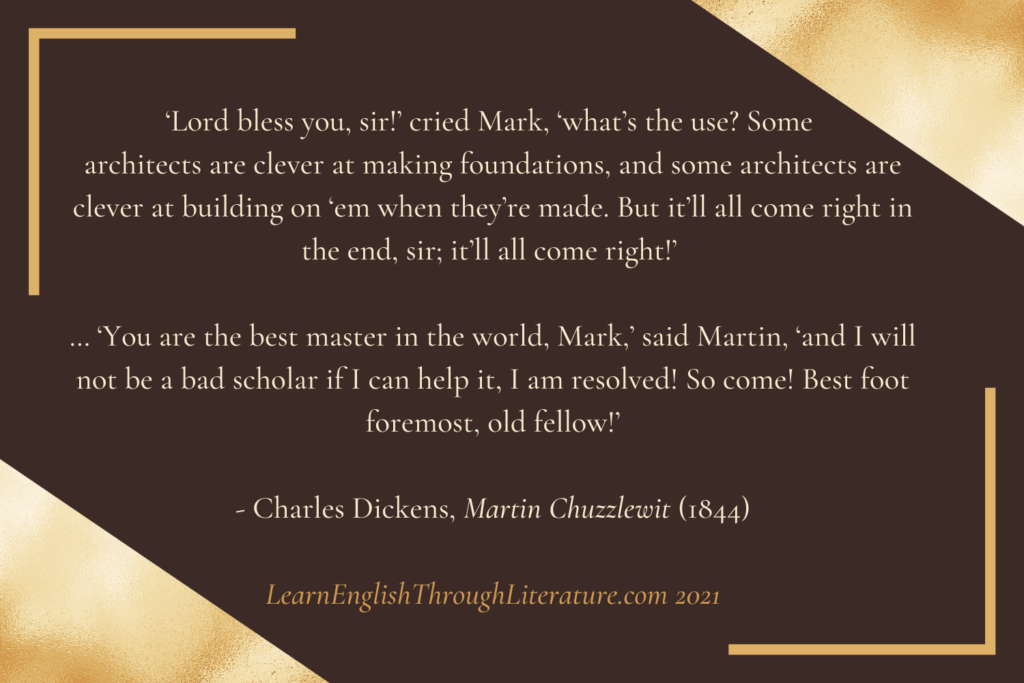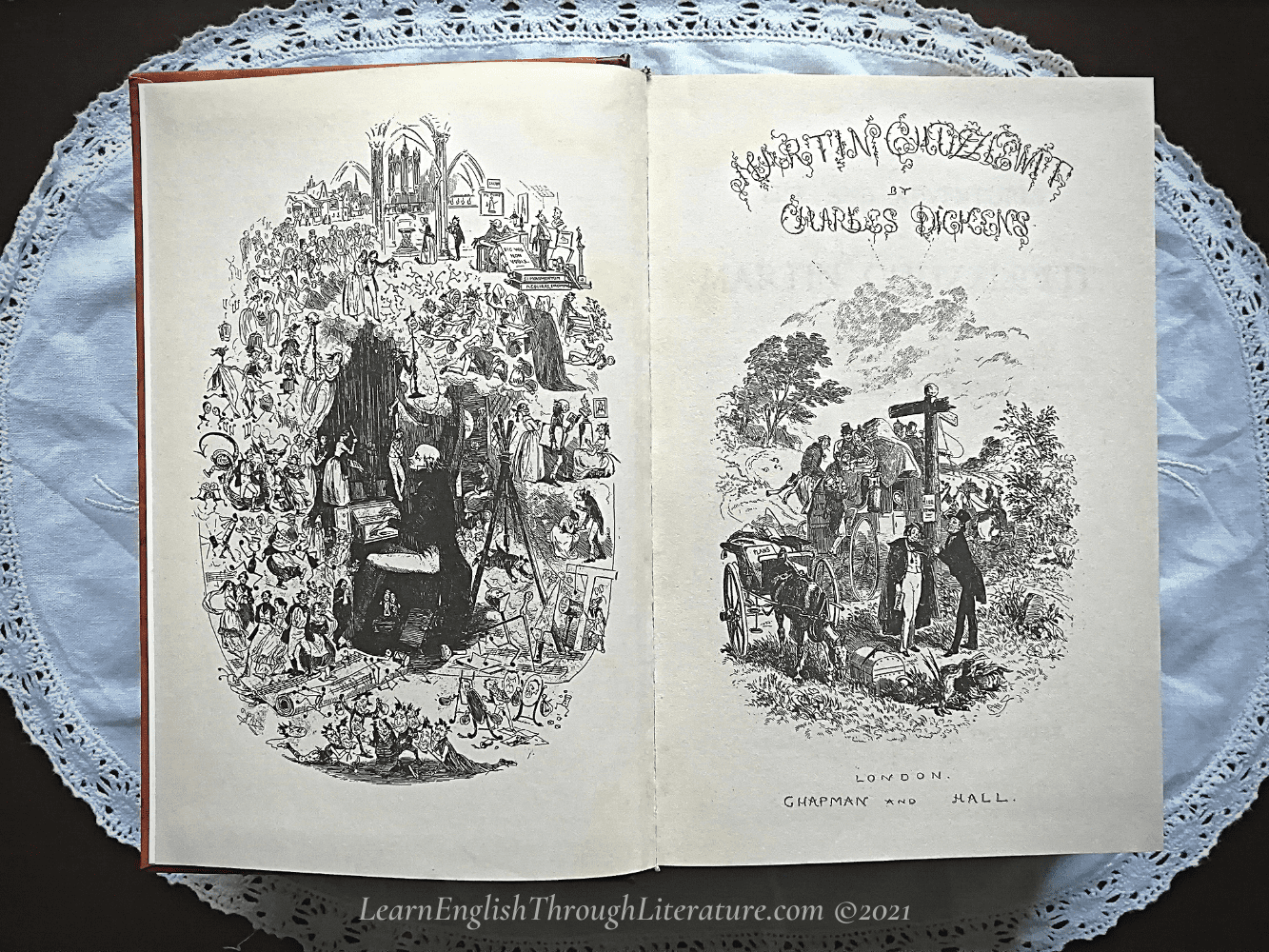📙 … For Mark had some practical knowledge of such matters, and Martin learned of him; whereas the other settlers who remained upon the putrid swamp (a mere handful, and those withered by disease), appeared to have wandered there with the idea that husbandry was the natural gift of all mankind.
They helped each other after their own manner in these struggles, and in all others …
– Charles Dickens, Martin Chuzzlewit (1844)
…
This week I am bringing you some excerpts (short passages taken from a larger work) from Charles Dickens’ Martin Chuzzlewit (1844), which is a book I read earlier this year in March. I am also watching a BBC series based on the book every night (you can find it on YouTube) and re-reading the book as I go along.
On this re-reading, I am noticing certain things I hadn’t observed on the first read.
💡 One of the main things I am now paying attention to is how the characters relate to each other, especially the tutor-student or mentor-mentee relationships in the book, of which there are many in this particular novel.
All this got me thinking about how English language learners also relate to their tutors, mentors, or coaches.
👉 It is easy to assume that there is one way to learn English – through a traditional teacher-student route, but as this novel shows, there are other ways worth considering!
In this Lesson, I will
- share Martin Chuzzlewit’s background story,
- highlight original passages from the novel, and
- compare and contrast how Charles Dickens portrayed different teaching / learning relationships through it.
So keep reading with me to the end!
…
📝 BACKGROUND TO (and EXCERPTS FROM) MARTIN CHUZZLEWIT
This is the first long novel that Dickens ever wrote and one which he was quite proud of. He wrote to his friend John Forster in November 1843:
📜 You know, as well as I, that I think Chuzzlewit is a hundred points immeasurably the best of my stories. That I feel my power now, more than I ever did. That I have greater confidence in myself than I ever had. That I know, if I have health, I could sustain my place in the minds of thinking men, though fifty writers started up tomorrow …
– Charles Dickens to John Forster, November 2nd 1843 (from Pilgrim Letters III 590-591)
Martin Chuzzlewit, the protagonist and titular hero (the hero after whom the novel is named), is a 21-year-old man who wants to become an architect. He lived with his wealthy grandfather (Old Martin Chuzzlewit) all his life until recently, when he fell in love with a young woman called Mary Graham, his grandfather’s helper and companion. Old Martin Chuzzlewit disapproved of this; a disagreement followed, and grandfather and grandson separated.
Young Martin promises himself that he will train to become a great architect, set up a successful business, and, once he has a large income, marry and support Mary Graham even without his grandfather’s backing.
So he sets off to the house of Mr Pecksniff, an architect who teaches and accommodates students in his own home.
But certain problems arise along the way … 🔎
…
📝MR PECKSNIFF AND MARTIN CHUZZLEWIT
In the passage below, Pecksniff leaves Martin some homework:
NOTE: Read through the passage even if you don’t fully understand every word right now. The purpose of this exercise is to give you a general comprehension of what the text says. And remember: Dickens liked to portray his characters in a funny way, so if something sounds a bit exaggerated to you – well, it probably is!
📙 ‘Let me see,’ [Mr Pecksniff] said, searching among the papers, ‘how you can best employ yourself, Martin, while I am absent. Suppose you were to give me your idea of a monument to a Lord Mayor of London; or a tomb for a sheriff; or your notion of a cow-house to be erected in a nobleman’s park. Do you know, now,’ said Mr Pecksniff, folding his hands, and looking at his young relation with an air of pensive interest, ‘that I should very much like to see your notion of a cow-house?’
But Martin by no means appeared to relish this suggestion.
‘A pump,’ said Mr Pecksniff, ‘is very chaste practice. I have found that a lamp post is calculated to refine the mind and give it a classical tendency. An ornamental turnpike has a remarkable effect upon the imagination. What do you say to beginning with an ornamental turnpike?’
‘Whatever Mr Pecksniff pleased,’ said Martin, doubtfully.
‘Stay,’ said that gentleman. ‘Come! as you’re ambitious, and are a very neat draughtsman, you shall— ha ha! — you shall try your hand on these proposals for a grammar-school; regulating your plan, of course, by the printed particulars. Upon my word, now,’ said Mr Pecksniff, merrily, ‘I shall be very curious to see what you make of the grammar-school. Who knows but a young man of your taste might hit upon something, impracticable and unlikely in itself, but which I could put into shape? For it really is, my dear Martin, it really is in the finishing touches alone, that great experience and long study in these matters tell. Ha, ha, ha! Now it really will be,’ continued Mr Pecksniff, clapping his young friend on the back in his droll humour, ‘an amusement to me, to see what you make of the grammar-school.’
Martin readily undertook this task, and Mr Pecksniff forthwith proceeded to entrust him with the materials necessary for its execution; dwelling meanwhile on the magical effect of a few finishing touches from the hand of a master … But such is the magic of genius, which changes all it handles into gold!
– Charles Dickens, Martin Chuzzlewit
As we can see from this passage, Mr Pecksniff’s approach to training Martin is traditional: he takes full control of the curriculum (the subjects that together make a course of study) and directs Martin on exactly what he should work on. Martin needs to ‘regulate’ (order, manage, copy a standard) his drawings according to ‘printed particulars’ (that is, work already done by other people).
The focus in their relationship is on Pecksniff’s ‘genius’ (this just means great ability) as a professional architect, and Martin submits to his instructions even though he is not working on a project that is meaningful to him.
📙 Martin began to work at the grammar-school next morning, with so much vigour and expedition … Martin’s facility, both of invention and execution, being remarkable, the grammar-school proceeded with great vigour …
– Charles Dickens, Martin Chuzzlewit
Martin is very good at what he does but ultimately he doesn’t learn much. This is because Pecksniff’s teaching methods didn’t work well for him: after the lessons end, Martin works all on his own.
Eventually Martin Chuzzlewit quits his dreams of becoming a good architect.
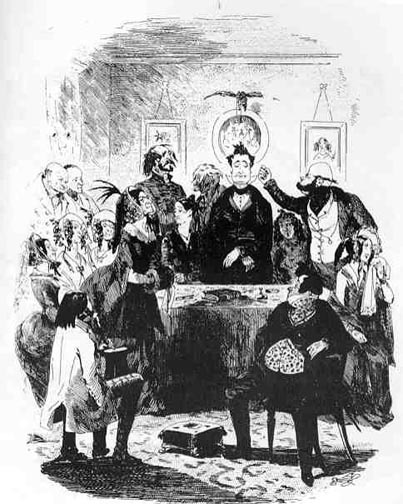
Credit: A photograph of an engraving in The Writings of Charles Dickens
…
📝 MARK TAPLEY AND MARTIN CHUZZLEWIT
Later on, Martin has the good fortune to meet a man called Mark Tapley. Mark, although older than Martin, offers to become his servant and companion on Martin’s trip to the United States. (At this time, a cross-Atlantic trip from Britain to the U.S. took many months and was often risky – so it is quite an adventure for the two!)
Mark Tapley is very knowledgeable but, unlike Mr Pecksniff, he is also willing to listen to what Martin wants, dreams of, what he needs, and can actually do.
At first, being the ‘master’ in their friendship, Martin Chuzzlewit tells Mark Tapley what he wants to have done, but as time passes and they learn to collaborate (work together on shared activities or projects), Martin feels less pressure to perform in that ‘paymaster’ role.
Instead, Mark Tapley tacitly encourages (encouraged indirectly, very gently, without commanding) Martin to test out his strengths and dreams, to try new challenges, and work on his weaknesses.
Martin Chuzzlewit has a lot to learn about life and needs guidance, but with a friend like Mark Tapley to support him, the experience becomes easier and more purposeful. Martin discovers his gifts and potential, and finally returns to England as a stronger and more mature man than when he first set off.
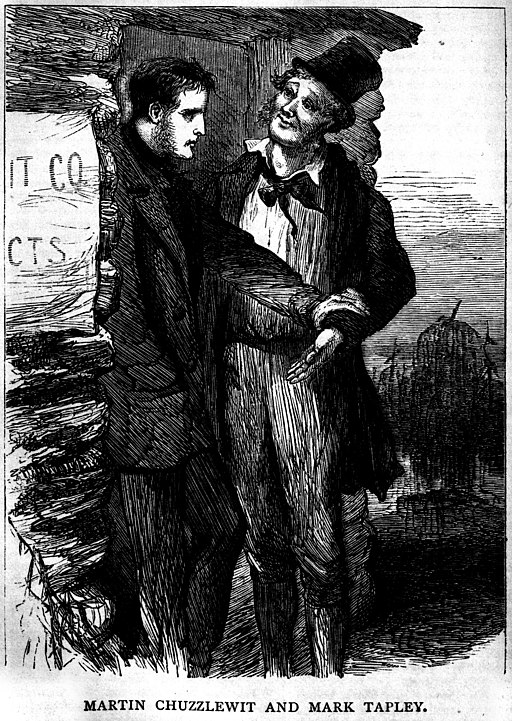
Credit: A photograph of an engraving in The Writings of Charles Dickens
…
📝 CONCLUDING THOUGHTS
The story ends with a dramatic contrast! 🕰️
Without spoiling it or giving it away, all I will say is that readers are left considering what Martin Chuzzlewit might have been had he stayed on with Mr Pecksniff and studied architecture through the old-school methods. Instead, Martin has developed more than he could have imagined through the careful and constant coaching of his friend Mark Tapley.
As I have mentioned before, I too am realising the great advantage of coaching over teaching English language learners. A journalist aptly (suitably, correctly, persuasively) described the difference as follows:
Teaching guides with knowledge and advice acquired by the teacher; coaching guides with knowledge and advice, which is based on the individual.
– ‘Teaching vs Coaching: A Difference in Nature’, by Mukesh Sharma (Hindustan Times, October 17th, 2019)
✏️ For this reason, I am offering a one-on-one coaching option to my English language students – so check it out here and see if it is a right fit for what you need. Like Martin Chuzzlewit, we should always explore different learning styles to develop our full potential!
Here is a closing summary of the two different tutoring styles we considered in today’s classic:
✍️ Martin Chuzzlewit and Mark Tapley work more like a STUDENT-COACH PAIR:
- Mark Tapley follows Martin Chuzzlewit’s interests, even though he is more experienced than Martin.
- Martin learns from Mark Tapley through shared experiences and watching Mark’s activity, insight, and responses to the new situations they face.
- Their relationship is more of a collaboration than a [pay]master-servant relationship. In fact, towards the end of the book, Martin calls Mark his ‘master’ because of all that he has coached him through.
✍️ By contrast, Martin Chuzzlewit and Mr Pecksniff have a traditional TEACHER-STUDENT RELATIONSHIP:
- Mr Pecksniff decides for Martin what he is going to learn and complete.
- He gives full instructions and advice on how to complete projects, but he doesn’t explain the reasoning behind his decisions. He leaves Martin to do the work on his own.
- Martin, being a talented student, completes the task but gets insufficient feedback because his tutor, Mr Pecksniff, is busy with others.
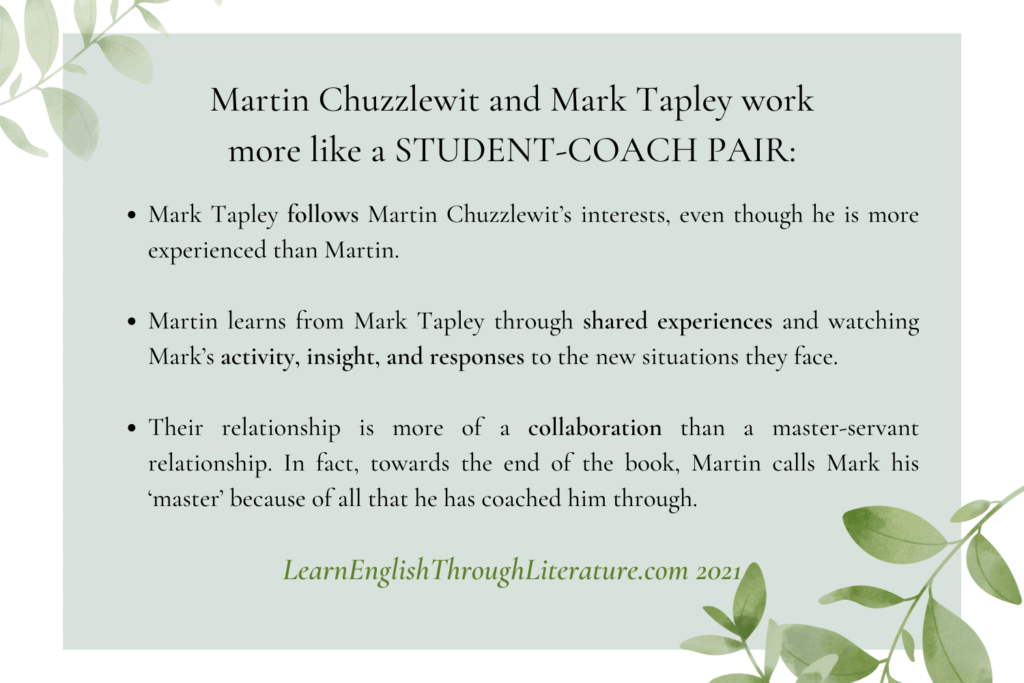
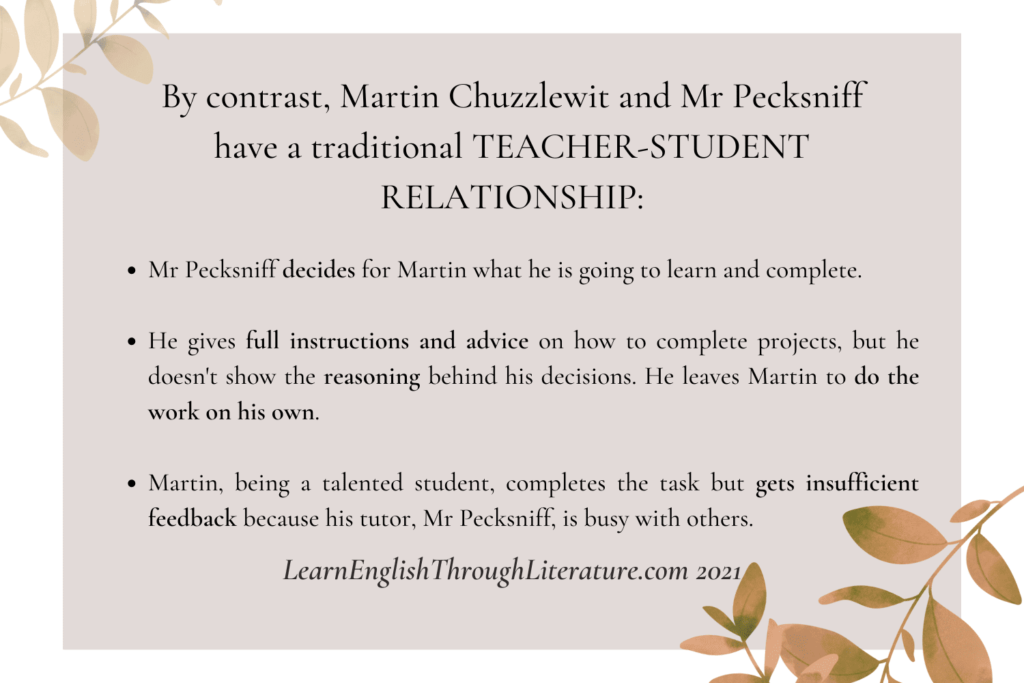
Now here are some questions for you:
🧐 What styles of teaching have you used before?
🤔 What worked for you and what didn’t?
😀 What can you improve next time?
Feel free to share your thoughts with me via the homepage’s contact form – I am always interested to learn from English learners themselves what they think works best!
